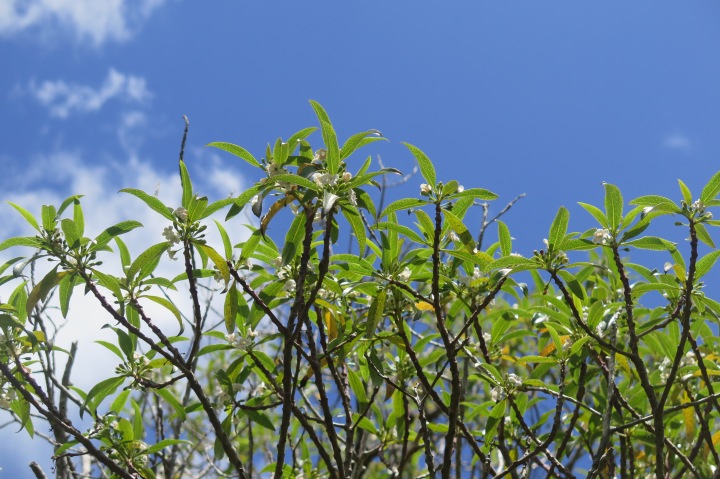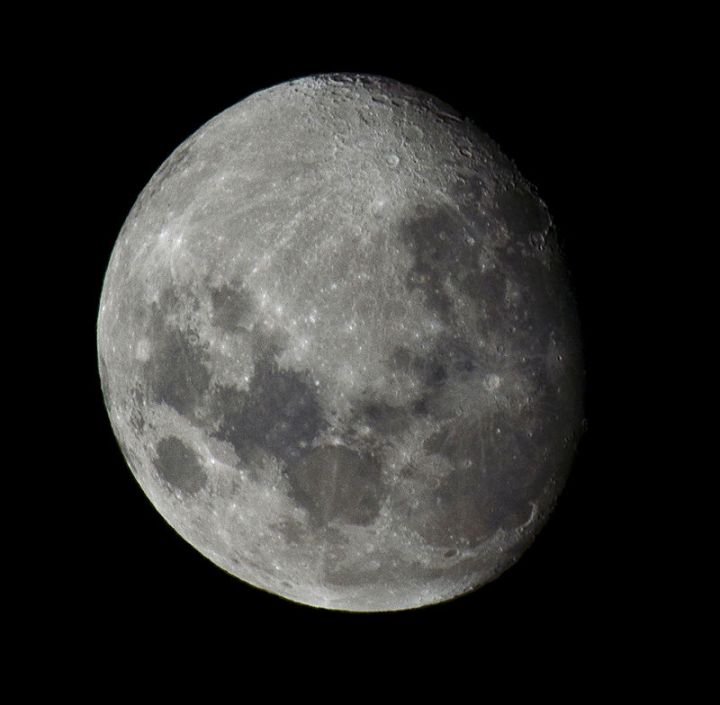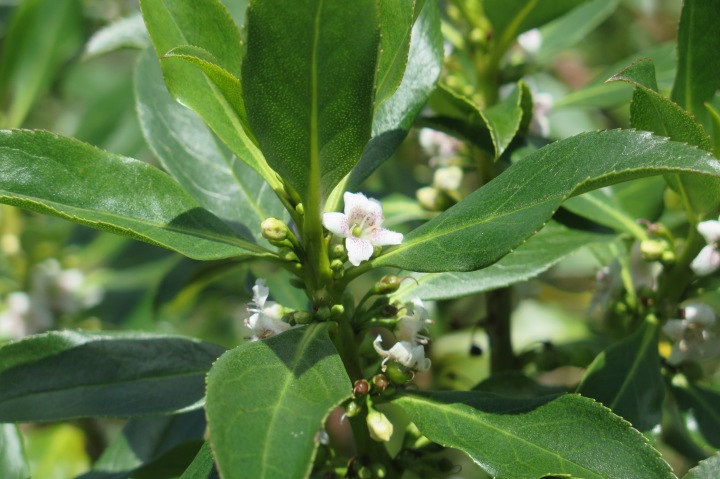Hold the leaves of Ngaio up to the light and you will see it is studded with oil glands. These glands are packed full of the toxin Ngaione, which kills its victims by shutting down the liver. Many horses, cattle, sheep and pigs have suffered this unfortunate fate after grazing on Ngaio leaves.
However, the toxic oil is not without its uses and Māori discovered that by rubbing the leaves on their skin it works as an excellent insect repellant for mosquitoes and sandflies. Early farmers even used it as a sheepdip – covering their sheep in the oil to help ward off parasites.

Ngaio had a number of medicinal uses as well. The leaf buds were chewed to help soothe the stomach after eating bad mussels. The inner bark was scraped and rubbed on sore gums and teeth, and it was said to be effective in easing the pain. It was also infused with water and used to treat cuts, bruises, ulcers and skin conditions such as leprosy. The berries were also sometimes eaten, but are now known to contain Ngaione.

The importance of Ngaio in Māori culture is underscored by its adoption into the Man on the Moon myth. Cultures all around the world have interpreted the craters on the moon differently, from biblical figures to banyan trees and even a giant rabbit mixing the elixir of life. For Māori, the craters resemble a female figure holding a Ngaio tree. The story goes that a woman – Rona – went down to the river to gather water, but tripped and fell when the moon passed behind a cloud. Furious, she hurled insults at the moon until at last the moon became so enraged that he grabbed Rona and pulled her up to the sky. She grabbed the nearest thing – a ngaio tree – and held on for dear life, but the moon tore the tree by the roots and carried them both into the night sky forever.

Ngaio was once home to a special type of insect – the large flightless Ngaio Weevil. It is able to process the toxic compounds in the leaves and feeds almost exclusively on Ngaio. It is was once widespread across the country and was a favourite food of the extinct laughing owl. Unfortunately is is now regarded as nationally critical and only found on a single island in the Marlborough Sounds.
Want to learn more about Ngaio?
Ngā tipu whakaoranga – Maori plant use database
New Zealand Plant Conservation Network
T.E.R.R.A.I.N
The Ngaio Weevil – Anagotus stephenensis
Ngaio images: Robert Vennell




Very interesting, thanks for sharing.
LikeLike
Cheers, Thanks for reading!
LikeLike
Why is it sometimes referred to as the mouse hole tree?
Famous detective story writer NZer Ngaio Marsh named after this flower ?
LikeLike
Good question! I attempted to find the answer but came up short.
I can only assume that it refers to holes that are occasionally seen in the trunk and wood, perhaps these resemble a nice little spot for a mouse?
Yes, I would say so. Ngaio is a relatively common name in Maori and is derived from the Ngaio tree.
The word ngaio can also be used to describe a professional or academic and used as a verb meaning exhaustive or thorough.
Thanks for reading!
LikeLike
Hi, how do you distinguish between the NZ ngaio (myoporum laetum) and the aussie version (myoporum insulare). I have several from one source and don’t want to spread the wrong one, or hybrids.
Ken M
LikeLike